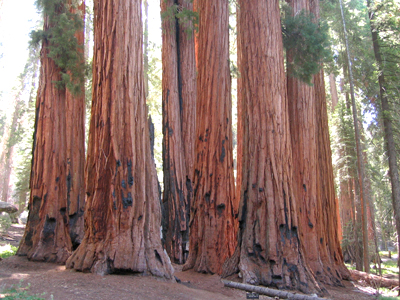
On Wednesday, July 5, 2017, the East Bay Regional Park District Board of Directors took action to support California’s national monuments. The Board voted unanimously to adopt a resolution outlining their support for protected national monuments and urging President Trump to honor all designated national monuments.
On April 26, 2017, President Trump issued an Executive Order calling for a review of all national monuments designated since 1996 which are over 100,000 acres. The executive order applies to six California monuments: Berryessa Snow Mountain (Napa, Solano and Yolo counties), Giant Sequoia in the southern Sierra, Carrizo Plain in southern San Joaquin Valley, San Gabriel Mountains northeast of Los Angeles and two desert monuments Sand to Snow and Mojave Trails.
“America’s protected federal public lands and national monuments belong to all Americans,” said East Bay Regional Park District General Manager Robert Doyle. “The East Bay Regional Park District calls on the President to honor and protect the integrity of all national monuments, as have been designated by U.S. Presidents since 1906.”
The Antiquities Act of 1906 authorizes U.S. Presidents to designate as national monuments any historic landmarks, historic and prehistoric structures and other objects of historic or scientific interest that are located on land owned or controlled by the federal government. Twenty-two such monuments have been designated in California.
“Our nation has a tradition of protecting public lands for the benefit of all Americans,” said Doyle. “California’s designated national monuments help define who we are as Californians and as a nation, and help protect these public lands for future generations.”
National monuments and other federal protected public lands also benefit tourism and economic development – supporting thousands of jobs across California and the country. In California alone, outdoor recreation generates $85 billion in consumer spending annually and supports over 730,000 jobs.
El Distrito de Parques Regionales del Este de la Bahía (EBRPD) es un sistema de parques públicos y senderos hermosos en los condados de Alameda y Contra Costa, establecido en 1934. El sistema se compone de 120,000 acres en 65 parques y más de 1,250 millas de caminos para senderismo, ciclismo, montar a caballo y aprender sobre la naturaleza.
